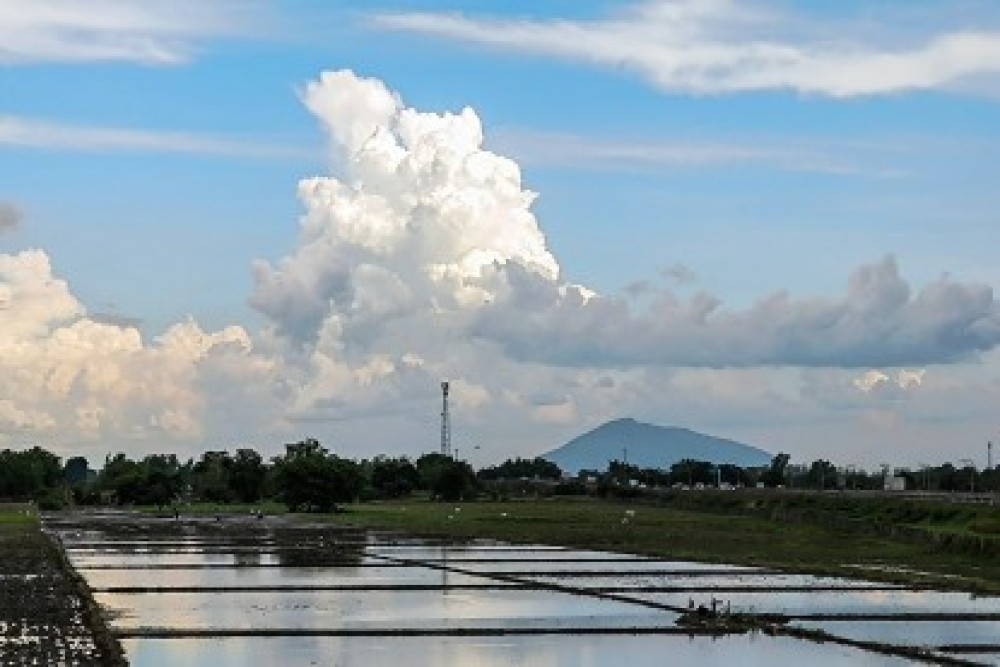After the harsh impacts of the El Niño and La Niña weather phenomena, President Ferdinand R. Marcos Jr. demonstrated a strong desire to ensure the immediate recovery of affected persons and improve the country’s resilience against disasters.
During El Niño’s peak in May, about 61 provinces suffered drought, 17 experienced dry spells, and three endured dry conditions.
The phenomenon severely affected the agriculture and fisheries sector, incurring P9.89 billion in damage and losses, as of June 6.
Of the losses, P4.75 billion was absorbed by the rice sector, followed by corn (P3.37 billion), high-value crops (P1.70 billion), fisheries (P57.72 million), livestock and poultry (P10.47 million), and cassava (P3.42 million).
To cushion the impact of El Niño, Marcos led the distribution of financial assistance to farmers and fisherfolk nationwide through the Presidential Assistance to Farmers, Fisherfolk, and Families (PAFFF).
The presidential assistance was on top of the aid given by other concerned government agencies.
The government has distributed P906 million in assistance to more than 90,000 beneficiaries in Cagayan Valley, Bicol Region, Zamboanga Peninsula, Northern Mindanao, Davao Region, Soccsksargen, and the Bangsamoro Autonomous Region in Muslim Mindanao through the PAFFF from May 9 to June 5.
Select beneficiaries also received other assistance, among them farm inputs, alternative livelihood, and technologies, to compensate for their losses and aid in their recovery.
Based on data from the Department of Agriculture, the government has released P659.17 million as production support assistance to 18,838 beneficiaries, as of June 6.
On June 6, Marcos extended nearly P60 million in financial assistance under the PAFFF to help farmers and fisherfolk in the Davao Region cope with the adverse impacts of El Niño.
The President likewise distributed P158.15 million in financial assistance to the local government units (LGUs) of the Caraga Region on June 20 and P147.6 million in Aurora province on July 12, as part of the government’s support for farmers and fisherfolk affected by El Niño.
He also led the distribution of P952.66 million to Palawan LGUs and P116.64 million to Romblon, Occidental Mindoro, and Oriental Mindoro LGUs on July 18 to help farmers and fisherfolk recover from the effects of the weather phenomenon.
About P184.99 million from the Office of the President was also given to farmers and fisherfolk in the Ilocos Region on July 19.
BACK-TO-BACK TYPHOONS
The Philippines was likewise confronted by the unprecedented series of onslaughts of six strong tropical cyclones in less than a month between October and November.
Marcos acknowledged that climate change fueled the rare occurrence of back-to-back cyclones, which include Severe Tropical Storm Kristine (international name Trami, Oct. 21-25), Super Typhoon Leon (Kong-rey, Oct. 27 to Nov. 1), Typhoon Marce (Yinxing, Nov. 4-8), Typhoon Nika (Toraji, Nov. 9-12), Super Typhoon Ofel (Usagi, Nov. 12-15), and Super Typhoon Pepito (Man-yi, Nov. 14-18).
Despite the catastrophic events, Marcos was prompt in issuing directives to concerned government agencies, augmenting the government’s relief and response efforts, visiting disaster-affected areas, and distributing cash, food packs, and other basic needs to the calamity victims.
“All of these compel us to establish a culture of preparedness and institutionalize disaster risk reduction and management practices across all sectors,” Marcos said during the 24th Gawad Kalasag awarding ceremony on Dec. 13.
In the wake of the damage and losses incurred due to climate-related disasters, Marcos emphasized the need to build safer, adaptive, and disaster-resilient infrastructures, such as roads and bridges.
In November, he directed all government agencies to step up preparations for natural disasters, including massive floods and landslides.
He directed the Department of Public Works and Highways (DPWH), the Department of Environment and Natural Resources, and other agencies to revise their flood control master plans, with an aim to expand the capacity of infrastructures to handle increasing flood risks.
Marcos also ordered the Department of Trade and Industry to ensure that all construction materials meet the standards for quality, safety, and climate adaptability.
FLOOD CONTROL PROJECTS
To improve drainage and prevent flooding in low-lying areas in the country, the Marcos administration continues to build flood control projects.
Marcos repeatedly instructed the DPWH to ensure that flood control projects are durable and can withstand the impacts of strong typhoons.
In August this year, the Department of Finance said the Philippine Health Insurance Corp.’s excess funds would be used to fund the implementation of infrastructure projects, which include farm-to-commercial center roads; the interconnectedness of islands, particularly the Panay-Guimaras Island Bridge; and support for flood management and control in Metro Manila and river basins in Luzon and Mindanao.
More than 5,500 flood control projects were completed from July 2022 to May 2024, according to government data.
As part of the government’s commitment to providing relief to calamity victims, Marcos was also focused on ensuring that each city or municipality will have an evacuation center that is safe, adaptive, and climate-proof.
On Dec. 6, Marcos signed Republic Act (RA) 12076, or the Ligtas Pinoy Centers Act, establishing a nationwide network of permanent, storm-resilient evacuation centers designed to withstand typhoon winds of up to 300 kph and seismic activity of up to magnitude 8.0.
The evacuation centers will be fully equipped with sleeping areas, health care stations, sanitation facilities, and provisions for livestock, and prioritize high-risk and disaster-prone areas, based on RA 12076.


